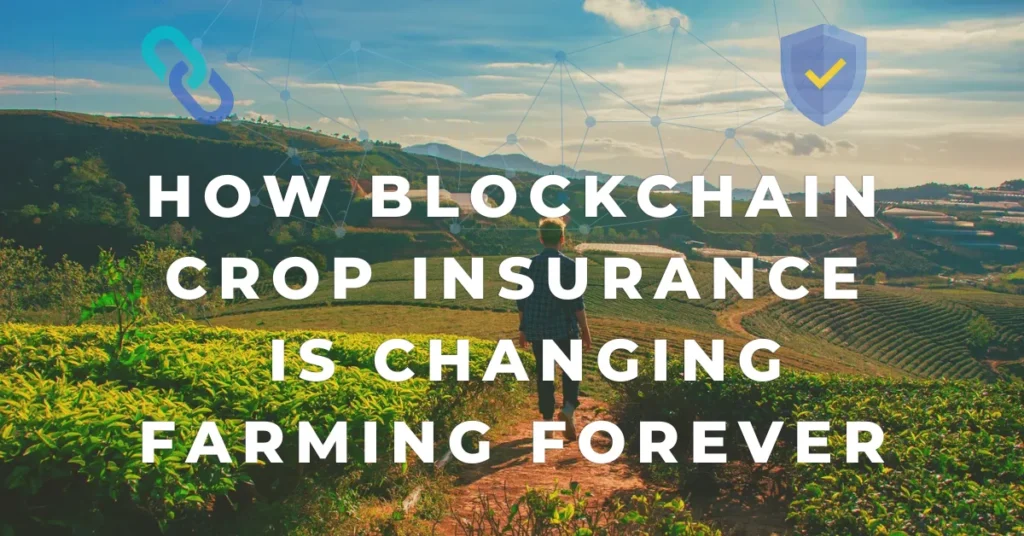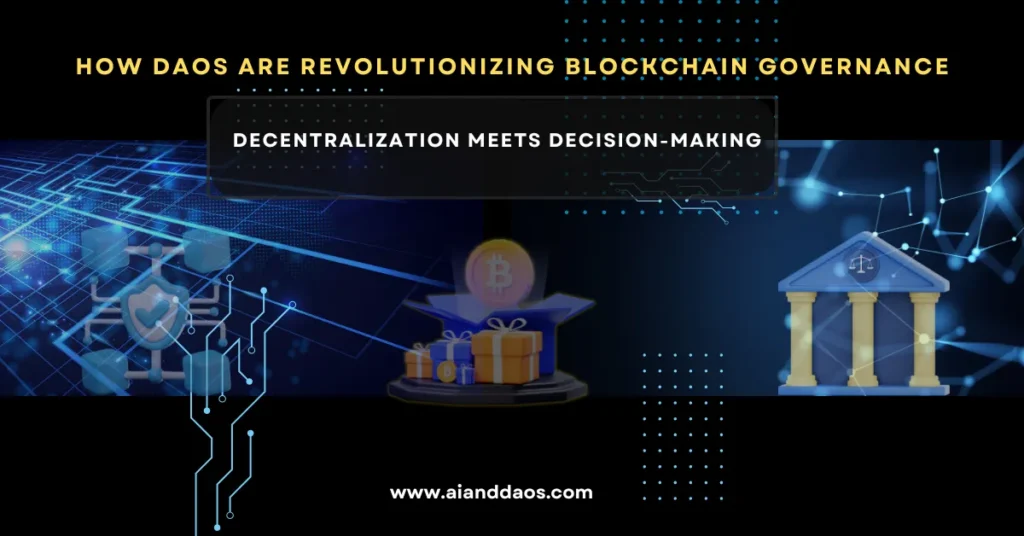Why Traditional Crop Insurance Falls Short
Tired of dealing with slow, unreliable insurance? Blockchain crop insurance is offering farmers a faster, fairer way to get help when things go wrong.
Think about it—you’re a farmer who’s worked hard all season. Then, the rain doesn’t come. Your crops begin to dry up, and just like that, your entire year’s income is at risk. So, you turn to your crop insurance, hoping it will step in.
But instead of quick support, you get delays, forms to fill out, inspections to wait for—and sometimes, you’re denied completely. It’s frustrating, especially when time matters most.
That’s where traditional crop insurance falls short. It wasn’t built for the kind of fast-moving, unpredictable challenges farmers face today.
Now, imagine something better. Your farm gets hit by drought, and as soon as the weather data confirms it, your insurance payout is sent—automatically. No forms, no follow-ups, just help when you need it most.
That’s what blockchain crop insurance is starting to offer. It uses real-time data and smart contracts to make the whole process faster, more transparent, and far less stressful. And it’s not just theory—it’s already helping farmers in places like Kenya.
It’s a new kind of insurance for a new kind of farming world—and it might just change everything.
What Is Blockchain Crop Insurance?
Tired of dealing with slow, unreliable insurance? Blockchain crop insurance is offering farmers a faster, fairer way to get help when things go wrong.
Think about it—you’re a farmer who’s worked hard all season. Then, the rain doesn’t come. Your crops begin to dry up, and just like that, your entire year’s income is at risk. So, you turn to your crop insurance, hoping it will step in.
But instead of quick support, you get delays, forms to fill out, inspections to wait for—and sometimes, you’re denied completely. It’s frustrating, especially when time matters most.
That’s where traditional crop insurance falls short. It wasn’t built for the kind of fast-moving, unpredictable challenges farmers face today.
Now, imagine something better. Your farm gets hit by drought, and as soon as the weather data confirms it, your insurance payout is sent—automatically. No forms, no follow-ups, just help when you need it most.
That’s what blockchain crop insurance is starting to offer. It uses real-time data and smart contracts to make the whole process faster, more transparent, and far less stressful. And it’s not just theory—it’s already helping farmers in places like Kenya.
It’s a new kind of insurance for a new kind of farming world—and it might just change everything.
Smart Contracts in Farming Empower Farmers
How It Works – Step by Step
So, how does blockchain crop insurance actually work? Here’s a simple step-by-step breakdown:
1. Enrollment
Farmers sign up using a digital ID, mobile number, or verified land ownership data. This helps the system know who’s covered and where their farm is located.
2. Smart Contract Setup
Once enrolled, a smart contract is created. This contract connects to real-time weather data—like satellite-based rainfall tracking or weather station APIs. It’s programmed with clear rules: if rainfall drops below a set level during the growing season, a payout is triggered.
3. Automated Monitoring
The system keeps checking weather conditions automatically. There’s no need for the farmer to file a claim or prove losses manually.
4. Instant Payout
If the conditions are met (e.g., drought), the smart contract triggers an automatic payout. The money goes straight to the farmer’s digital wallet or mobile account—fast, with full transparency, and no paperwork.
What Is Blockchain in Farming? A Beginner’s Guide?
Benefits of Blockchain Crop Insurance
For farmers, timing and trust are everything—especially when their entire harvest is on the line. That’s where blockchain crop insurance really makes a difference.
One of the biggest benefits is speed. With traditional insurance, farmers often wait weeks—sometimes months—for a claim to be processed. But with blockchain, payouts are almost instant. The system watches weather conditions in real time, and if something like a drought or flood happens, the smart contract steps in and sends the payment automatically. No need to file a claim or prove what happened.
It also removes a lot of the frustration around paperwork and middlemen. Since everything runs on verified data and code, there’s less room for errors or delays. That means fewer disputes, less fraud, and more trust in the process.
Another important advantage is accessibility. Traditional insurance has often been too expensive or complicated for small farmers. But blockchain systems are simpler and cheaper to run, making it possible to offer coverage to smallholder farmers who’ve never had that chance before.
So, in simple terms—blockchain crop insurance is faster, fairer, and easier to access. And for farmers dealing with climate uncertainty, that can be life-changing.
Blockchain for Smallholder Farmers: Game-Changer
Real-World Examples & Pilots
The idea of blockchain crop insurance may sound futuristic—but it’s already happening on the ground in places where farmers need it most.
In India, a pilot program was launched to support rice farmers who often face unpredictable monsoons. Instead of filling out paperwork after losing their crops, these farmers were enrolled in a blockchain-based system that tracked rainfall and crop cycles. When drought conditions were detected, the system automatically released payouts—no delays, no chasing insurance agents. For many, it was the first time they received help on time.
Meanwhile, in Kenya, smallholder farmers took part in a parametric insurance trial powered by blockchain. The system used satellite data to monitor weather conditions. If rainfall dropped below a certain threshold during the growing season, a smart contract triggered compensation instantly. Farmers were notified through mobile phones, and the money landed in their accounts without any action on their part.
In Senegal, another project combined blockchain with local weather stations to protect communities vulnerable to long dry spells. These stations collected real-time data, feeding it into a blockchain network that managed insurance payouts. The goal wasn’t just to compensate losses, but to build long-term drought resilience—and early results are promising.
Each of these pilots shows how blockchain crop insurance is more than a concept—it’s a growing solution that’s already helping farmers bounce back faster and plan for a more stable future.
Barriers to Adoption
Blockchain crop insurance has a lot of promise, but there are still a few hurdles to overcome.
One big challenge is the digital divide. Many farmers in rural areas aren’t familiar with apps or digital wallets, so even simple steps can be confusing. Without basic digital literacy, it’s hard to benefit from tech-driven solutions.
There’s also the issue of rural connectivity. In some areas, farmers don’t have reliable internet or easy mobile access, which makes it tough to use blockchain-based platforms that depend on real-time data.
And then there are the insurance regulations. In many countries, current laws aren’t designed for smart contract adoption or blockchain-based claims. This creates extra red tape and slows down progress.
So while the technology works, scaling it up will mean closing these gaps and creating systems that work for everyone.
The Future of Blockchain in Climate-Resilient Agriculture
Blockchain crop insurance is just the beginning.
In the future, it’ll work alongside IoT devices, drones, and AI to track weather and soil conditions in real time—making insurance smarter and more accurate.
We may also see farmer-run insurance cooperatives using blockchain to manage their own coverage and payouts, building more trust at the local level.
And with climate-linked tokens, payouts could be even faster—or used directly to buy seeds, fertilizer, or tools.
Step by step, blockchain is helping farmers not just recover from climate risks—but get ahead of them.
A Safety Net Built on Trust
Blockchain crop insurance is giving farmers something they’ve needed for a long time—quick and fair support when things go wrong. In a time when weather is less predictable and losses can happen suddenly, getting help without delays really matters.
What makes this approach helpful is that it’s easy to understand, doesn’t rely on paperwork or middlemen, and gives farmers more control. As more people get access to it, we could see a farming system that’s stronger, fairer, and better prepared for the future.


